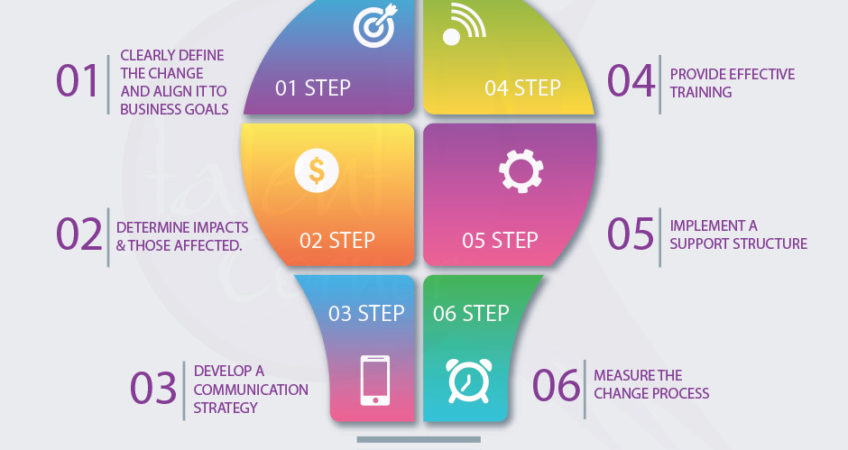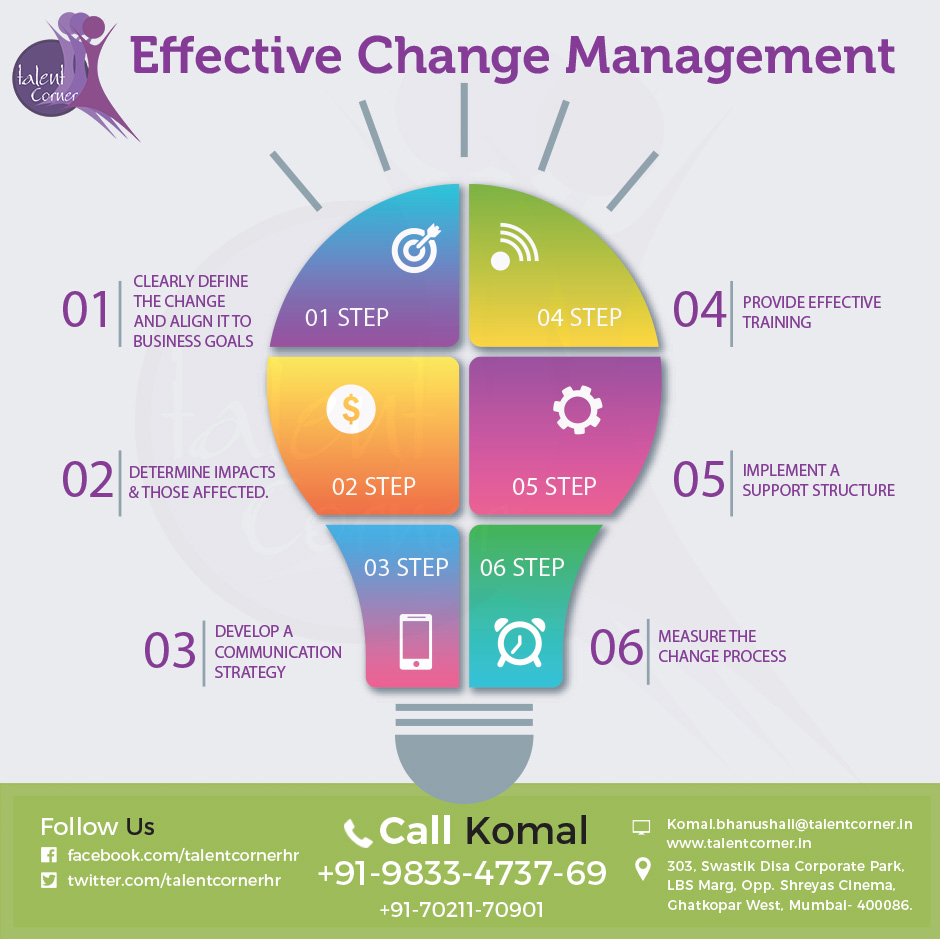
Effective Change Management
Most organizations today are in a constant state of flux as they respond to the fast-moving external business environment, local and global economies, and technological advancement. This means that workplace processes, systems, and strategies must continuously change and evolve for an organization to remain competitive.
Change affects your most important asset, your people. Losing employees is costly due to the associated recruitment costs and the time involved getting new employees up to speed. Each time an employee walks out the door, essential intimate knowledge of your business leaves with them.
What change management actually means?
Change management is a systematic approach to deal with the transition or transformation of an organization’s goals, processes or technologies. The purpose of change management is to implement strategies for effecting change, controlling change and helping people to adapt to change. Such strategies include having a structured procedure for requesting a change, as well as mechanisms for responding to requests and following them up.
To be effective, the change management process must take into consideration how an adjustment or replacement will impact processes, systems and employees within the organization. There must be a process for planning and testing change, a process for communicating change, a process for scheduling and implementing change, a process for documenting change and a process for evaluating its effects. Documentation is a critical component of change management, not only to maintain an audit trail should a rollback become necessary but also to ensure compliance with internal and external controls, including regulatory compliance.
Companies developing a change management program from the ground up often face daunting challenges. In addition to a thorough understanding of company culture, the change management process requires an accurate accounting of the systems, applications and employees to be affected by a change. Best practice frameworks can provide guiding principles and help managers align the scope of proposed changes with available digital and non digital tools.

So here are the 6 essential steps Effective Change Management
1. Clearly define the change and align it with business goals.
It might seem obvious but many organizations miss this first vital step. It’s one thing to articulate the change required and entirely another to conduct a critical review against organizational objectives and performance goals to ensure the change will carry your business in the right direction strategically, financially, and ethically. This step can also assist you to determine the value of the change, which will quantify the effort and inputs you should invest.
2. Determine impacts and those affected.
Once you know exactly what you wish to achieve and why, you should then determine the impacts of the change at various organizational levels. Review the effect on each business unit and how it cascades through the organizational structure to the individual. This information will start to form the blueprint for where training and support is needed the most to mitigate the impacts.
3. Develop a communication strategy.
Although all employees should be taken on the change journey, the first two steps will have highlighted those employees you absolutely must communicate the change to. Determine the most effective means of communication for the group or individual that will bring them on board. The communication strategy should include a timeline for how the change will be incrementally communicated, key messages, and the communication channels and mediums you plan to use.
4. Provide effective training.
With the change message out in the open, it’s important that your people know they will receive training, structured or informal, to teach the skills and knowledge required to operate efficiently as the change is rolled out. Training could include a suite of micro-learning online modules, or a blended learning approach incorporating face-to-face training sessions or on-the-job coaching and mentoring.
5. Implement a support structure.
Providing a support structure is essential to assist employees to emotionally and practically adjust to the change and to build proficiency of behaviors and technical skills needed to achieve desired business results. Some change can result in redundancies or restructures, so you could consider providing support such as counseling services to help people navigate the situation. To help employees adjust to changes to how a role is performed, a mentorship or an open-door policy with management to ask questions as they arise could be set up.
6. Measure the change process.
Throughout the change management process, a structure should be put in place to measure the business impact of the changes and ensure that continued reinforcement opportunities exist to build proficiencies. You should also evaluate your change management plan to determine its effectiveness and document any lessons learned.
